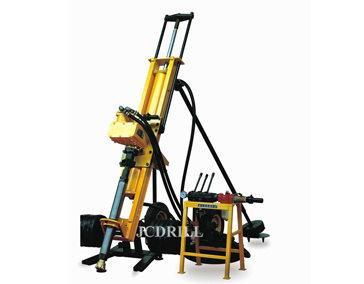+86 10 8467 3566
+86 10 8467 3566
Mar. 04, 23
Drilling rigs are industrial machines used for drilling boreholes in the earth's surface. They are commonly used in various industries such as oil and gas, mining, water well drilling, construction, and environmental investigation.
There are several types of drilling rigs, each with its specific purpose and design. Some of the most common types include:
Land Rigs: Land rigs are drilling machines used onshore for exploration and production of oil, gas, and water wells. They are large and powerful machines that can drill up to several thousand meters into the earth's surface. Land rigs are designed to be mobile, so they can be transported to different locations to drill new wells.
Offshore Rigs: Offshore rigs are drilling machines used to drill for oil and gas in offshore locations. They are mounted on platforms or ships and are specially designed to withstand harsh weather conditions and rough seas.
Portable Rigs: Portable rigs are small drilling machines that can be easily transported from one location to another. They are used for drilling shallow wells and for environmental investigations.

Rock Blasting Drilling Rig
Workover Rigs: Workover rigs are drilling machines used to maintain and repair existing wells. They are used to clean, repair, or replace damaged parts of the wellbore.
Drilling Rig Components: Drilling rigs consist of several components, each with its specific function. Some of the most common components include the drill bit, drill string, drilling fluid, mud pumps, and the derrick.
Drill Bit: The drill bit is the cutting tool used to drill into the earth's surface. It is designed to cut through various types of rock and soil.
Drill String: The drill string is the pipe that connects the drill bit to the surface. It is made of several sections of pipe that are screwed together. The drill string also includes the drill collars, which are heavy steel tubes that provide weight and stability to the drill bit.
Drilling Fluid: The drilling fluid is a mixture of water, clay, and other additives used to lubricate and cool the drill bit. It also helps to stabilize the wellbore and prevent blowouts.
Mud Pumps: Mud pumps are used to circulate the drilling fluid from the surface to the drill bit and back to the surface. They create the necessary pressure to push the drilling fluid down the drill string and into the wellbore.
Derrick: The derrick is the tall steel structure that supports the drill string and provides a workspace for the drill crew. It is usually made up of several sections of steel pipe that are bolted together.
The process of drilling a well with a drilling rig involves several steps:
Site Preparation: Before drilling can begin, the site must be prepared. This includes clearing the area and leveling the ground. A drilling pad is then constructed, which provides a stable base for the drilling rig.
Spudding In: Once the site is prepared, the rig is moved into position, and the drill string is lowered into the wellbore. This is called spudding in.
Drilling: The drilling process begins with the drill bit cutting into the earth's surface. As the drill bit cuts through the rock and soil, the drilling fluid is circulated down the drill string and back up to the surface, carrying with it the cuttings.
Casing: As the well is drilled deeper, steel casing is installed to prevent the well from collapsing. The casing is cemented in place to provide a seal between the wellbore and the surrounding rock.
Completion: Once the well has been drilled and cased, it is completed. This includes installing production equipment such as pumps and valves, and connecting the well to pipelines or tanks.